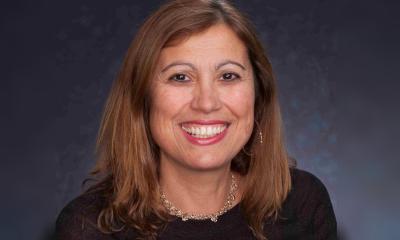Seeing eye to eye
Heidelberg’s doctor/nurse equal partnership concept raises staff/patient satisfaction. For the past decade the surgery and anaesthesiology departments at Heidelberg’s 340-bed University Hospital have encouraged cooperation between doctors and nurses that has set the standard for other hospitals within its remit.

Under the motto Care at eye level, the physicians transferred certain responsibility of care to nurses, resulting in a significant improvement in healthcare provision with simultaneous improvements to the working ambience as well as treatment quality. Gisela Müller, the head of Nursing and Services at the hospital’s Surgery Department who manages some 800 nurses and service staff (including physiotherapy, social services and cardiac technology), said the concept positively impacted on negative aspects of clinical life, turning uncoordinated processes, insufficient dialogue between the professions, long waiting times, fluctuations in capacity utilisation of operating theatres and beds into events in history.
Initially, the concept came about when Professor Markus Büchler joined the surgery department about ten years ago. ‘Because he regarded nursing care as an equal partner we could make structural and other changes on a completely different level,’ she explained. In a university hospital, which traditionally sees a strong fluctuation amongst doctors, nursing is perceived as a continuous, stable entity within the organisation. Nursing and medical directors in Heidelberg work ‘at eye level’, i.e. they are equal partners.
This partnership extends to all departments within the hospital. ‘In the course of professional communication over the years, we found a common language,’ Gisela Müller said, adding that she is involved from the start in all communication structures, i.e. participating in hospital management meetings as well as regular doctors’ meetings.
A competence shift in wound, pain and patient management
The question that opened up the concept was: Who does what best? ‘This showed, for instance, that the changing of dressings should be the responsibility of nurses rather than doctors. The patient now doesn’t have to wait until the doctor returns from the operating theatre in the afternoon. Instead, wound management is carried out at regular times. This improves the treatment plan and daily structure for patients,’ she explained. For pain management, certain tasks were transferred to the pain nurse who carries out ward rounds for postsurgical patients. Once daily, an anaesthetist supports them in this task. For medical colleagues this transfer of tasks means they can concentrate on their key competencies while the nurses provide more assistance with planning and organisation.
The establishment of the central patient management concept is directed with the same objective. ‘Previously, patient management was often dependent on a consultant, but nowadays an experienced member of nursing staff pulls the strings. They, and their colleagues, are reliable contacts for the patient from the point of admission right through to discharge.’ All information converges so that bed capacity and operating theatre management are also controllable.
Through cooperation with hospitals providing the area’s primary care – and because of contacts with referring doctors, patient care is controlled by central patient management. Less severe cases are treated in cooperating hospitals whilst more complex cases are treated in the university hospital‘s surgery department. Due to all these measures the performance statistics rose significantly. Thus the central patient care concept has been transferred to all other hospitals linked to Heidelberg University Hospital. The ‘eye level’ concept is not only an economic success. The working climate, satisfaction among employees, patients and referring doctors, along with treatment quality have all improved, based on the daily appreciation and respect between doctors and nurses.
30.04.2012





